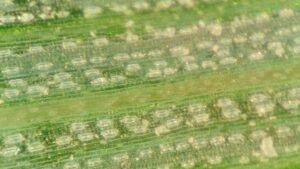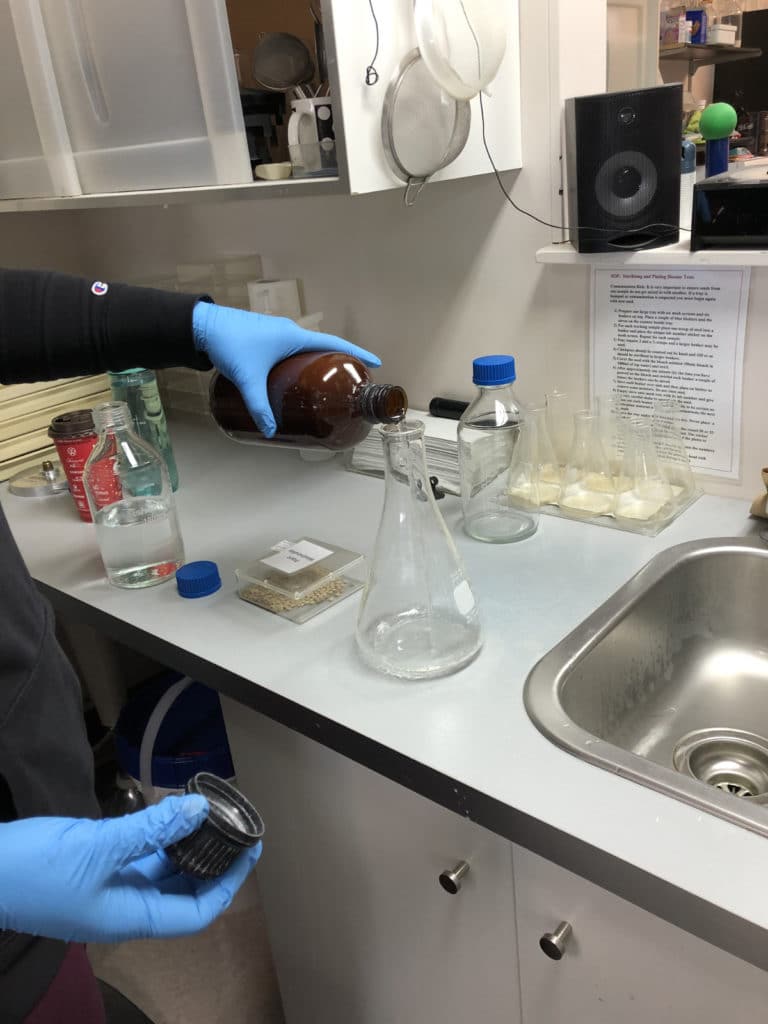
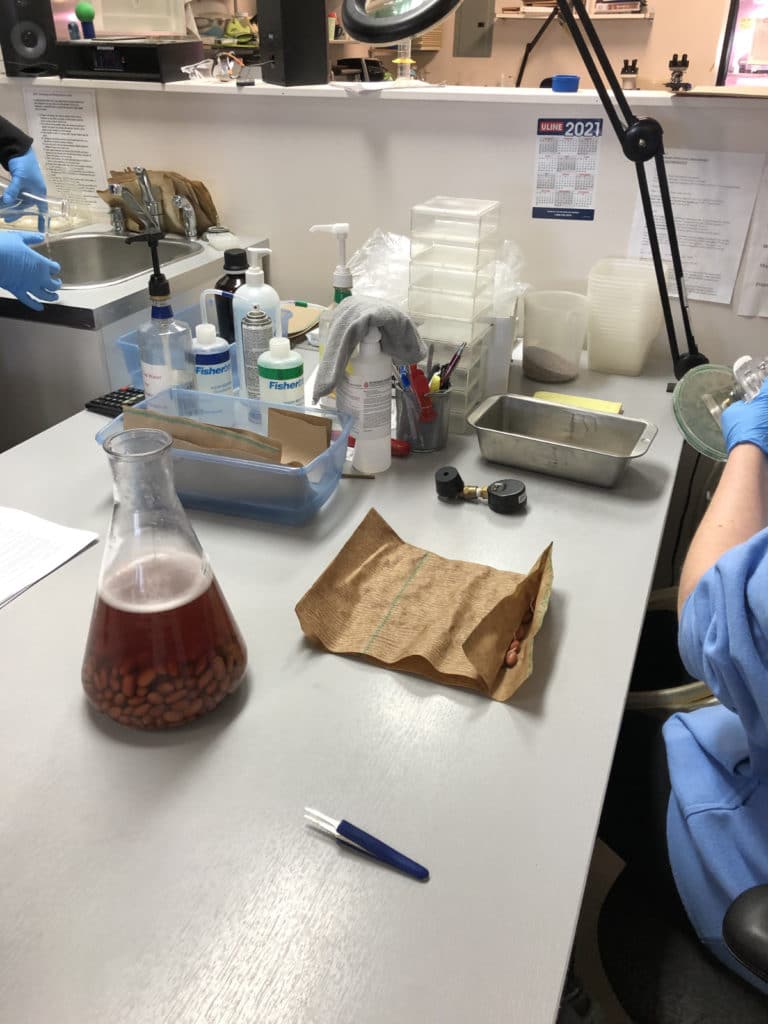
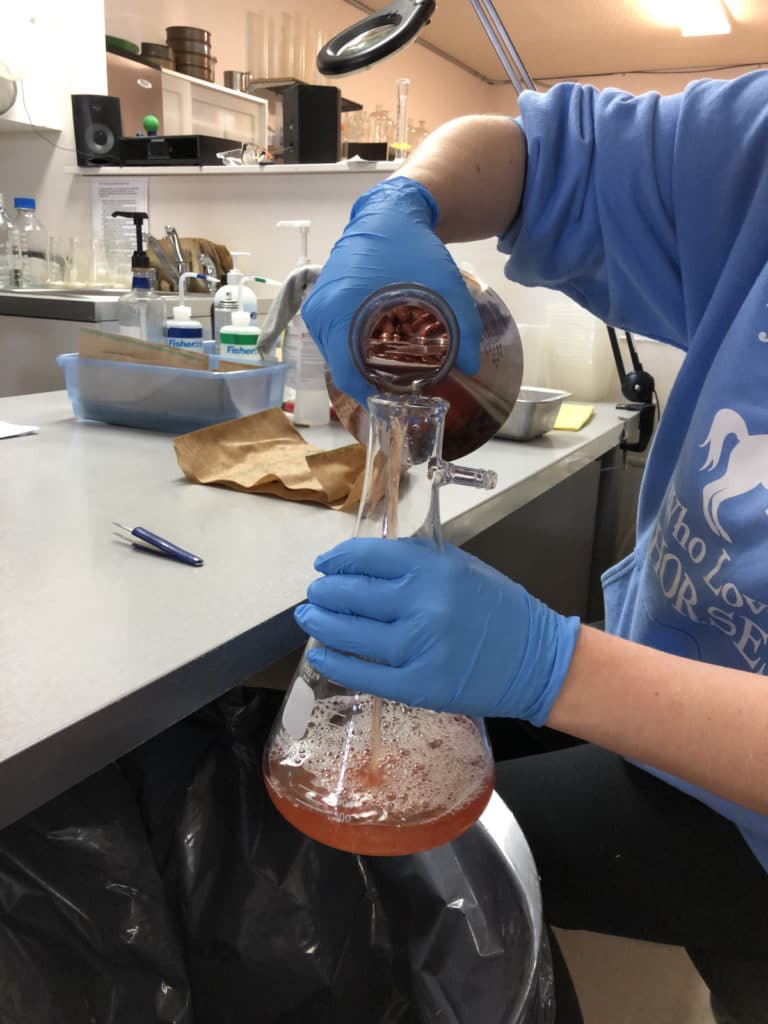
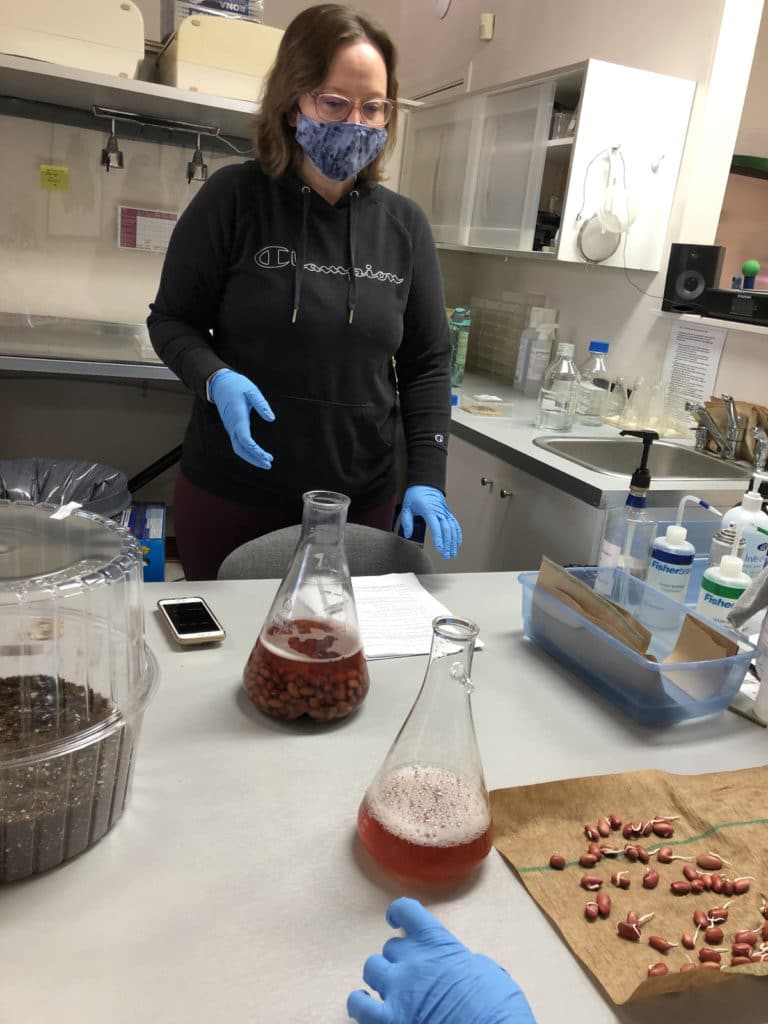
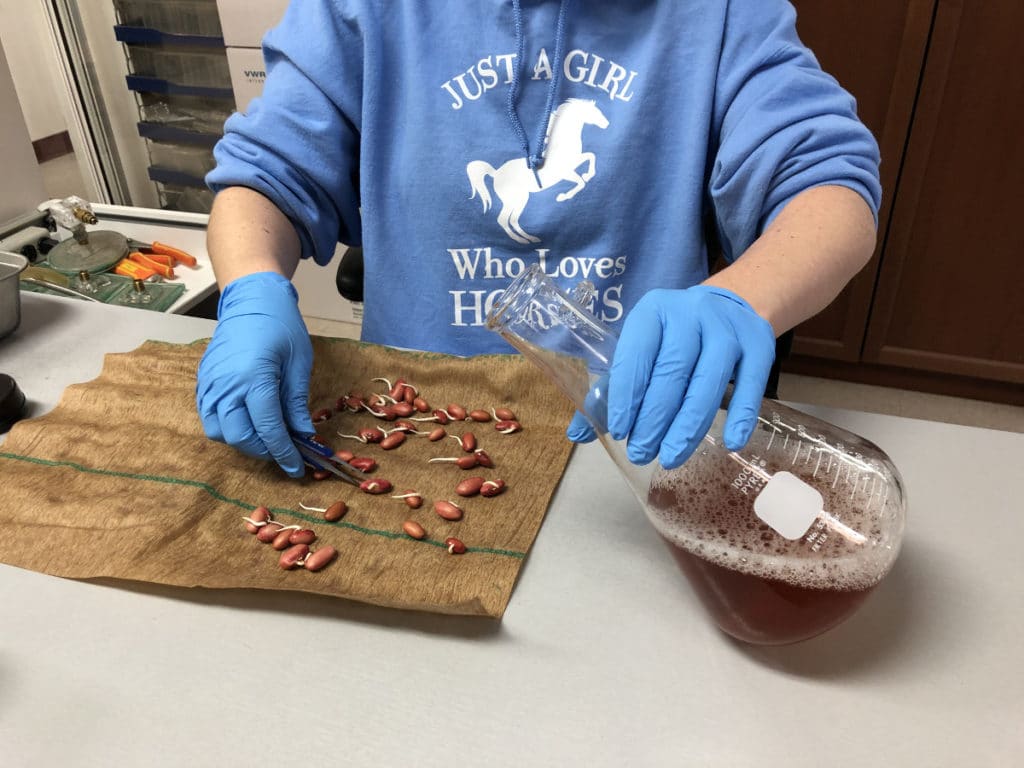
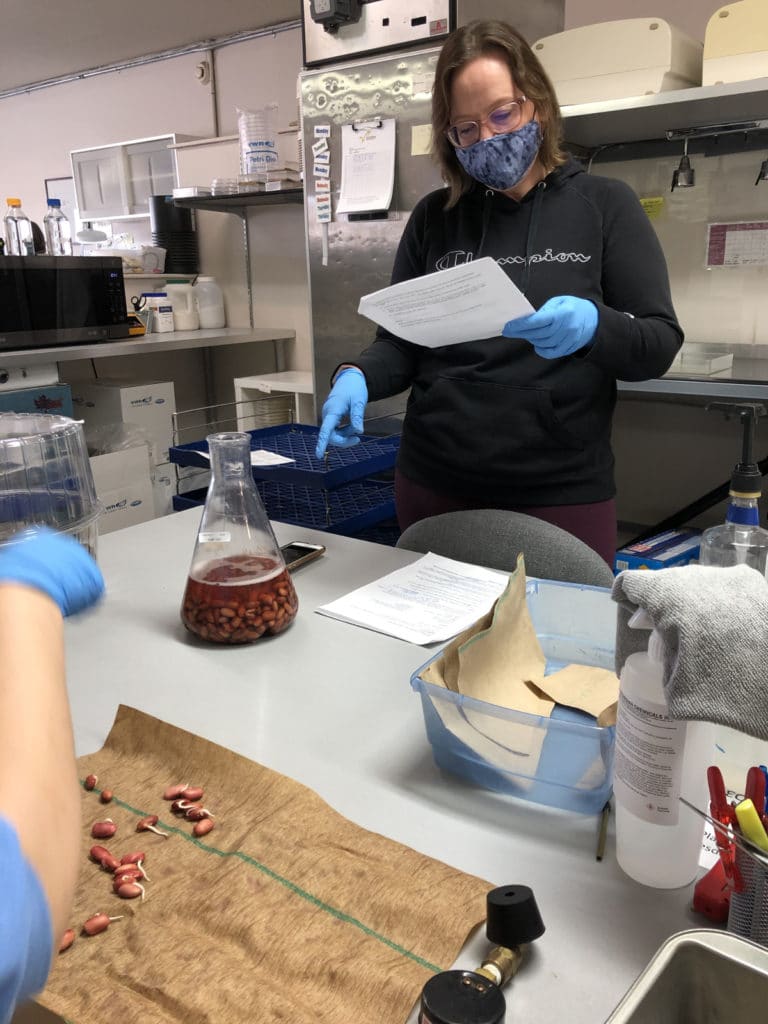
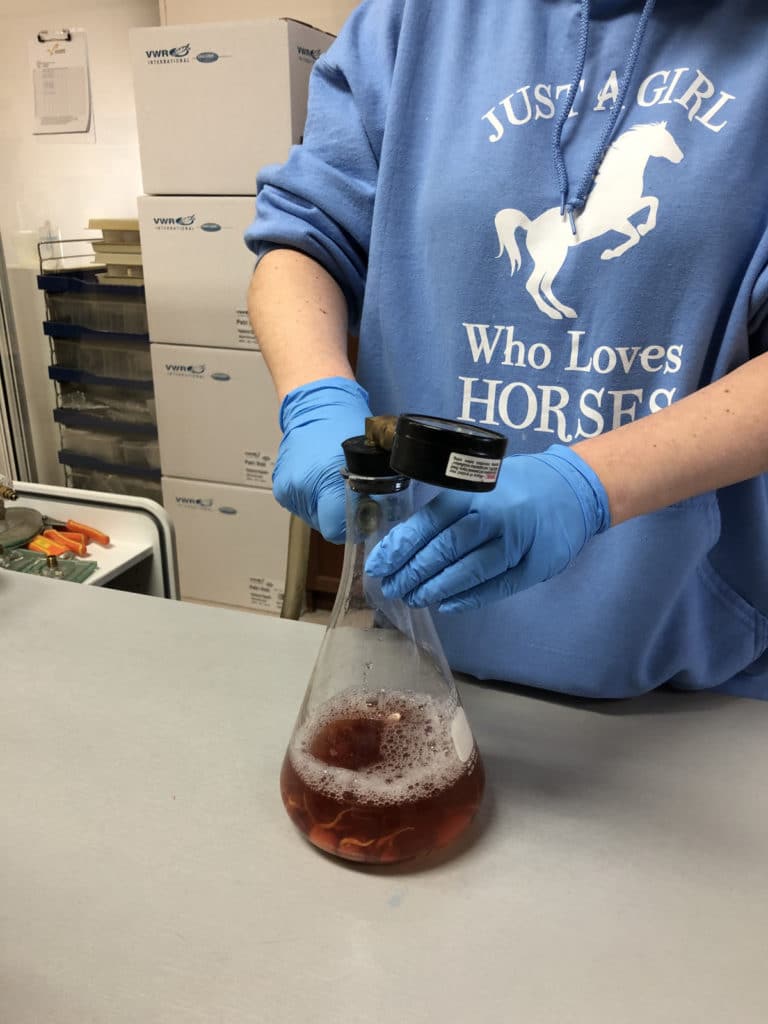
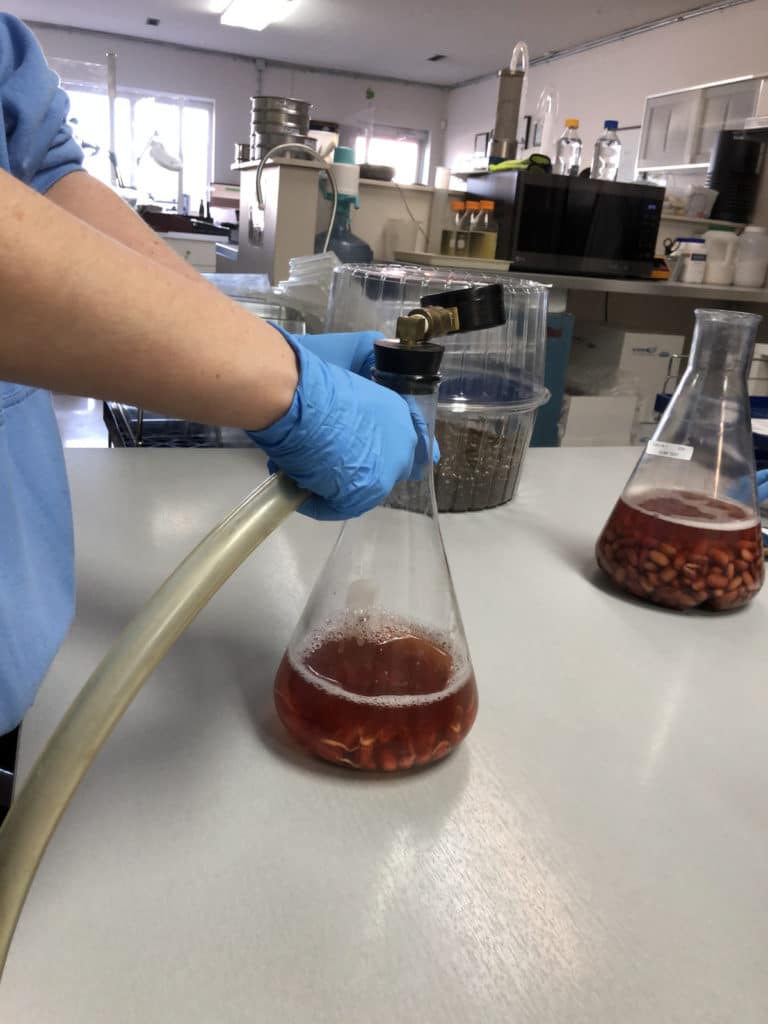
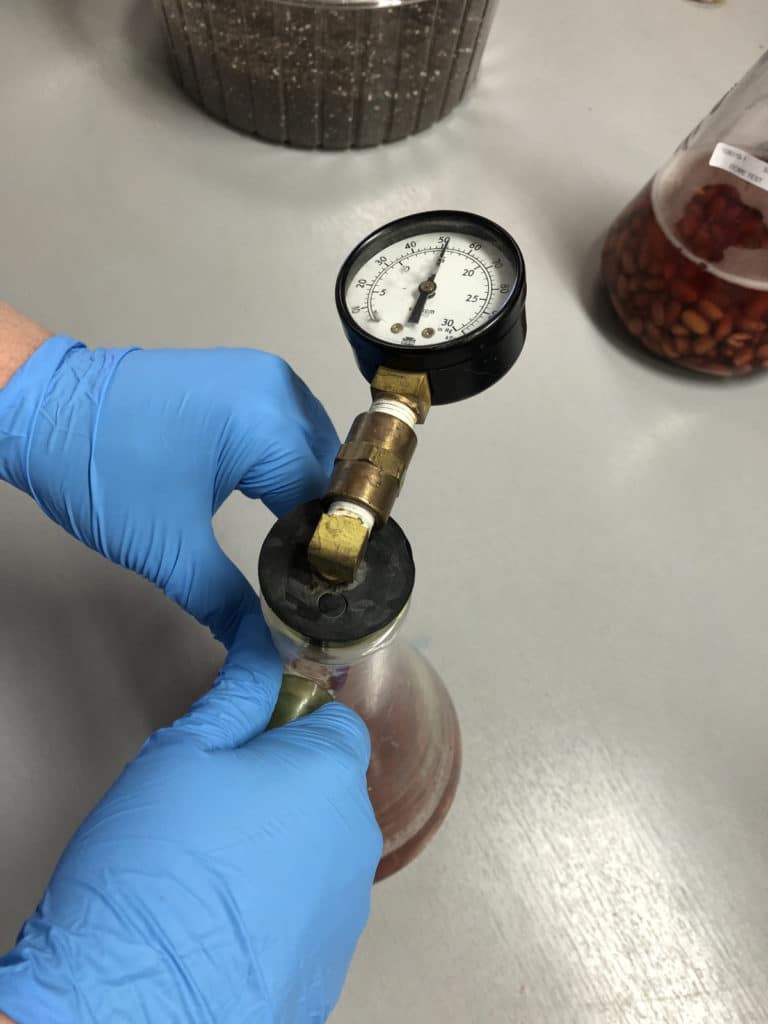
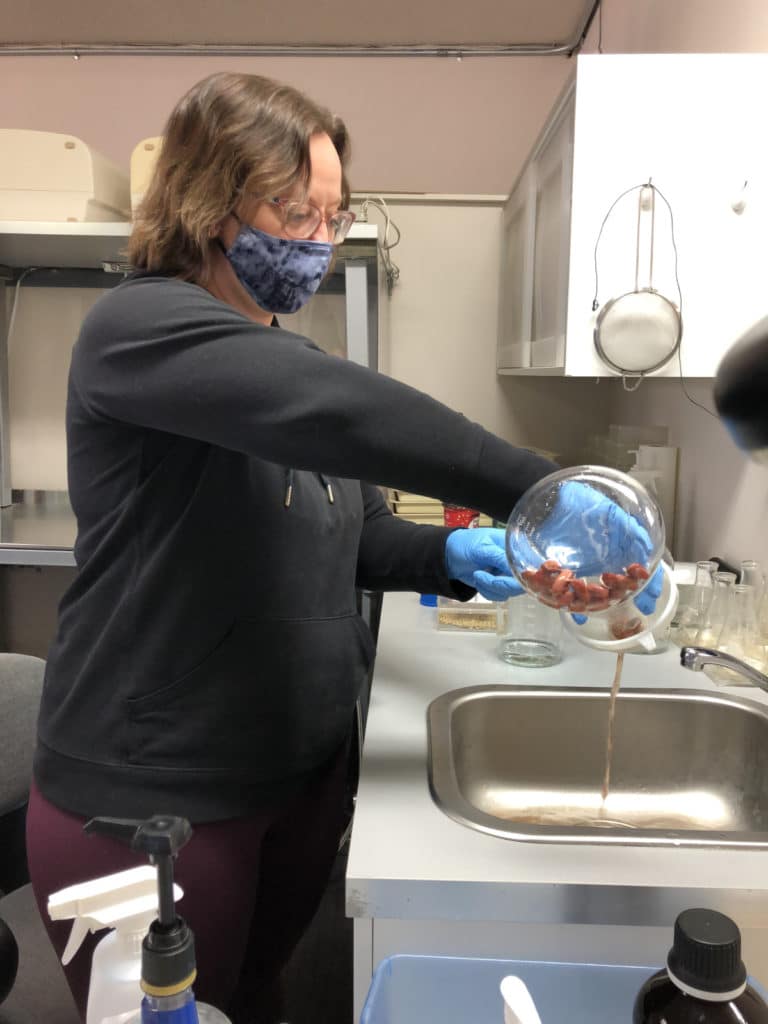
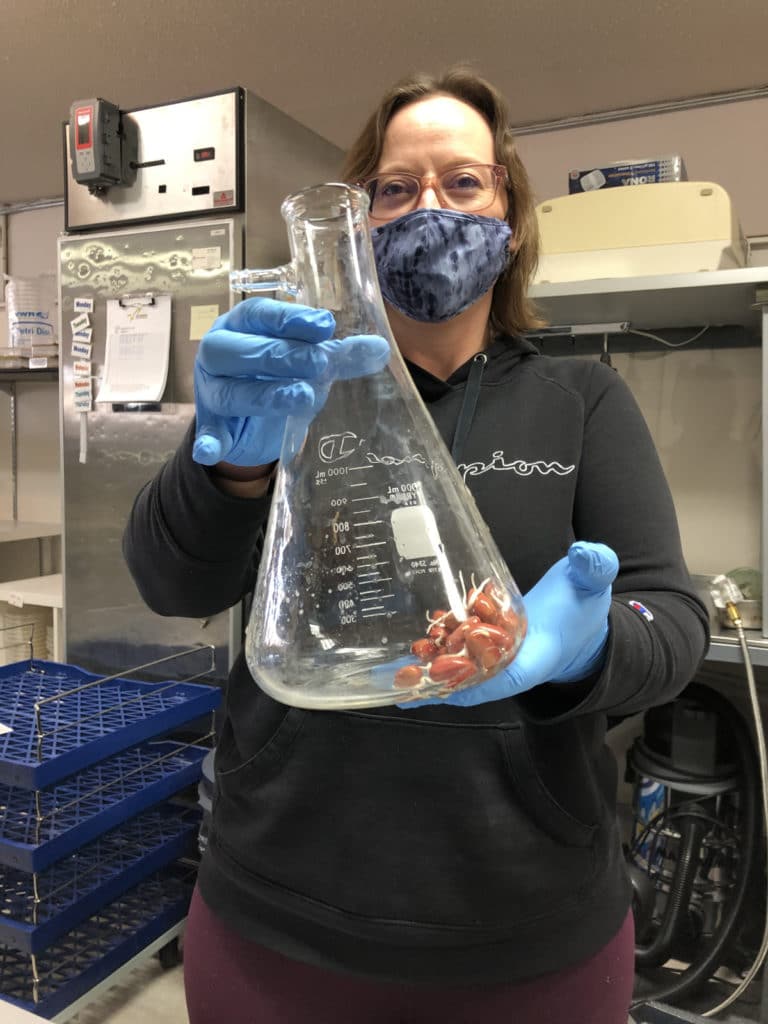


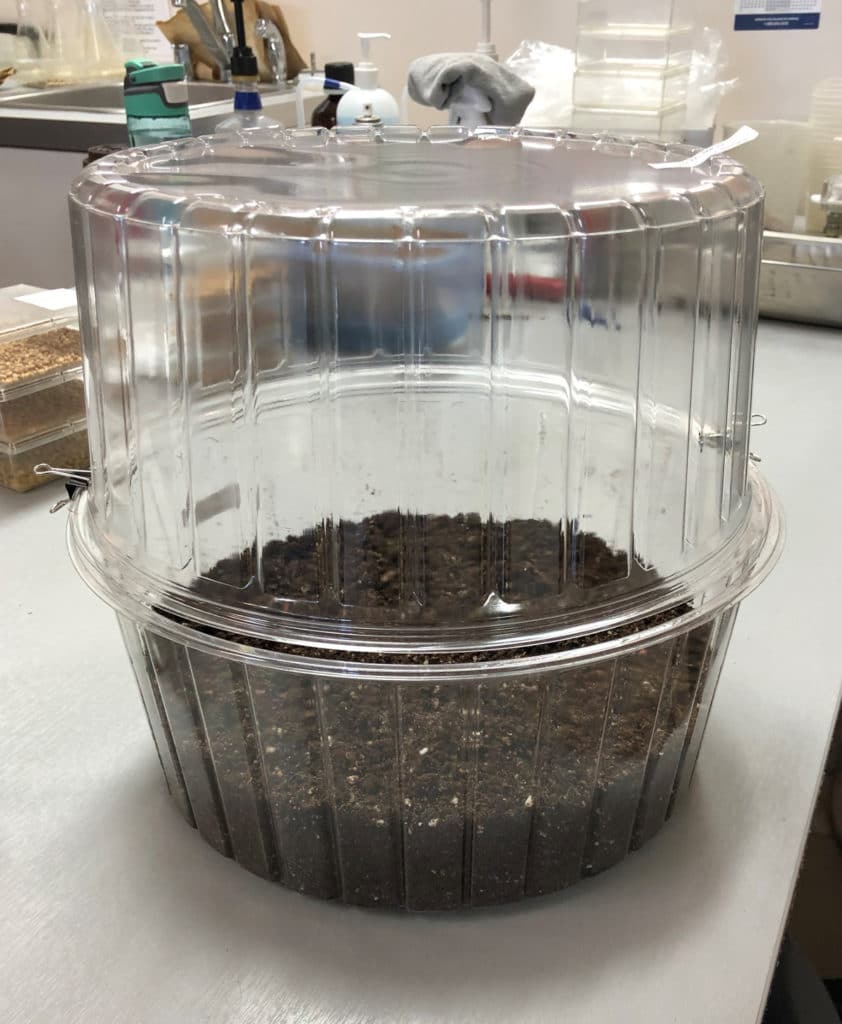
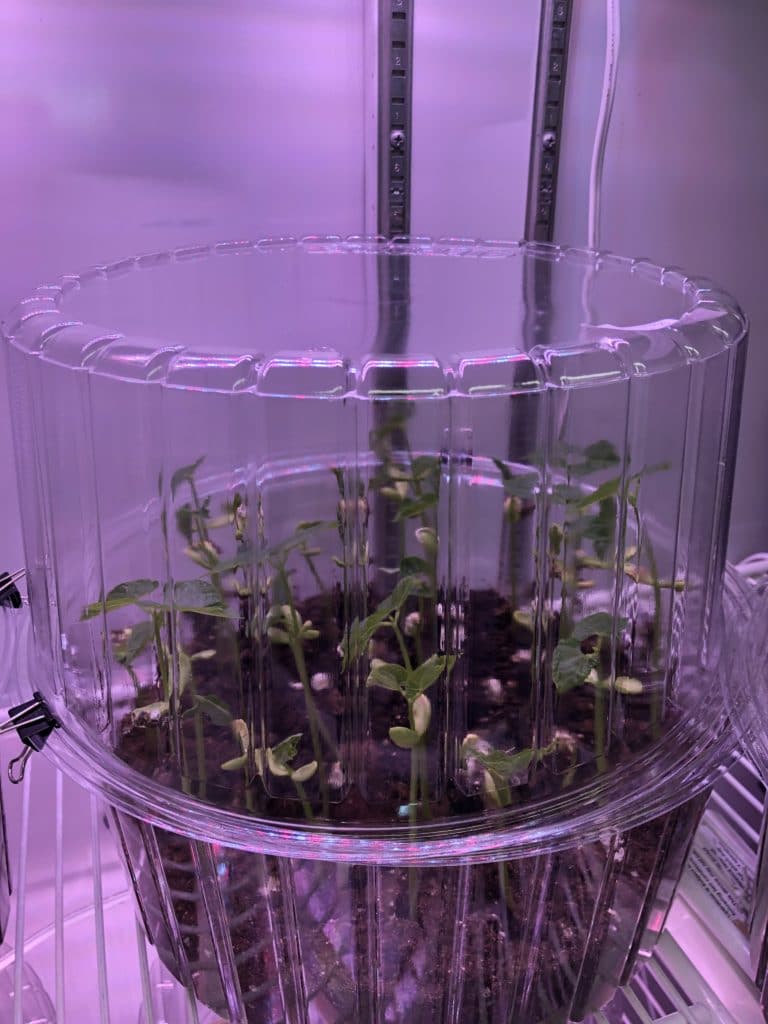
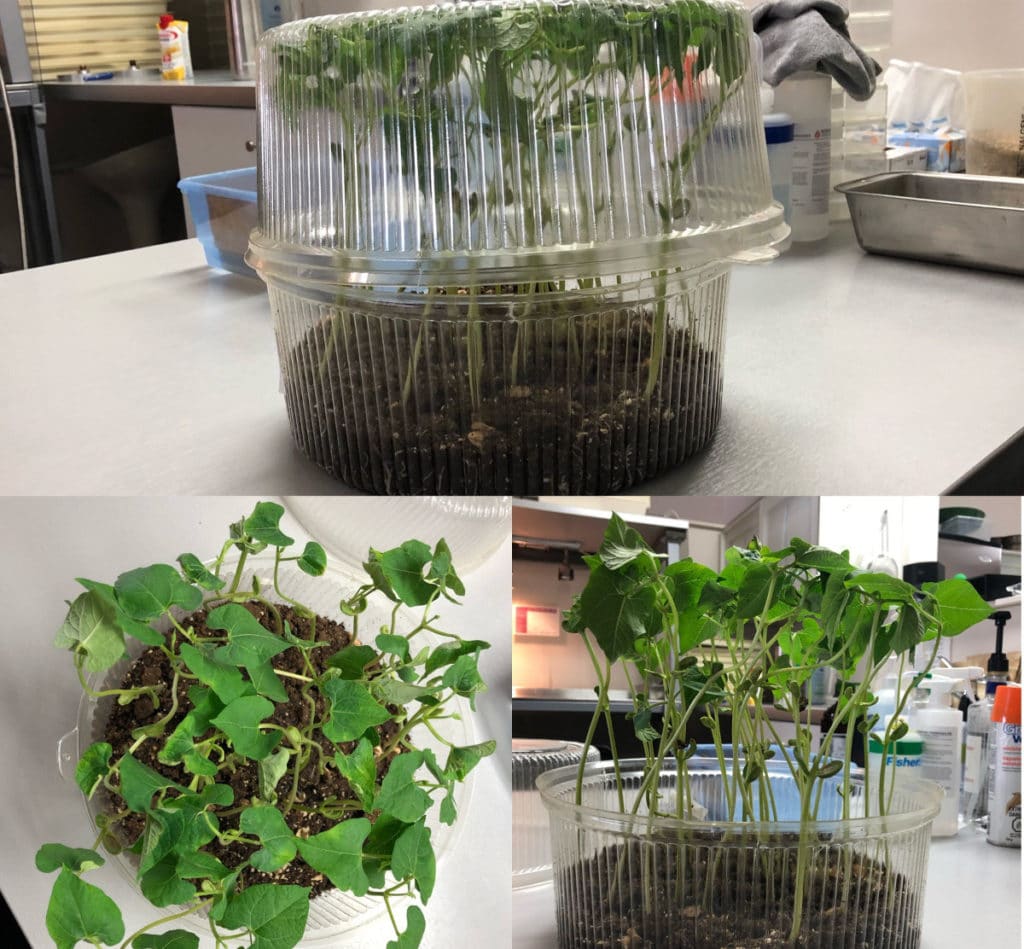
Did you know a cake dome has a lot to do with battling bacterial blight in beans?
Years ago, North Dakota State University invented the dome test for bacterial blight in bean. In that state, you can’t plant any bean seed without a test for this disease.
There are two primary types of bacterial blight found on dry edible beans in North Dakota — halo blight and common blight. Each is caused by a specific bacterial pathogen. Since bacterial blight is seedborne, all bean seed eligible for certification in North Dakota must be tested for the presence of the pathogen.
Some of the bean growing areas on the Prairies and even Ontario are starting to use the dome test to tell if there’s a level of bacterial blight in their beans before they plant or sell them. Warm, moist weather is a perfect breeding ground for bacterial blight, and bean growers are becoming increasingly concerned about ensuring they have a quality product.
The dome test is capable of detecting pathogens at very low levels in bean seed and as a result, provides a means of comparing the blight potential of different lots of seed.
So Where Does the Dome Come into Play?
The dome test uses a cake dome — like you see in every grocery store bakery section — to grow bean seedlings.
What happens in the dome test is we actually take 2,000 seeds and we sort, clean and soak them overnight. We then take the water from those 2,000 seeds and use a vacuum to basically inject it through 30 bean seedlings from the same seed lot. Those seedlings are grown inside the cake dome. It would be very expensive to test the same number of seeds in a plate test, which is why the dome is used.
A millilitre of this solution could have hundreds of thousands of bacteria in it. If there’s blight in any of those 2,000 seeds, it will show up as bacterial blight lesions on the leaves of the 30 plants exposed to the water.
The results of a dome test are calculated on the basis of the number of water lesion spots observed on the primary leaves of 13-day-old plants. It’s important when submitting a sample for a dome test that sufficient seed is submitted. A minimum of one kilogram of seed is required for the test.
How Does Bacterial Blight Work?
Halo blight and common blight reduce dry bean yields by reducing the ability of leaves to photosynthesize. Hail, blowing sand or wind-whipping, followed by rain, often trigger bacterial blights. Bacterial blights are also spread if bean rows are cultivated while leaves are wet.
Halo blight may occur any time during the cropping season. Typical symptoms are small brown spots that are surrounded by a light-green or yellow halo. The halo ranges from dime-size to the size of a quarter. It is caused by a toxin produced by the halo blight bacterium when the temperatures are less than 21 C for at least part of the day. In hot weather, halo blight will resemble bacterial brown spot.
Both diseases are carried on the seed and can be spread from plant to plant by rain, hail, irrigation, or wind. In the soil, blight can survive in old, diseased plants for a year or longer.
What Can be Done to Prevent it?
- Plant disease-free seed. This is important because all outbreaks of the disease have resulted from planting infected seed.
- Use a two- to three-year crop rotation to avoid the chance of contaminating the newly planted crop.
- Turn under plant debris as soon as possible after harvest to allow enough time for the debris to disintegrate over the winter. Avoid over-irrigation.
—with files from Manitoba Agriculture and North Dakota State University



